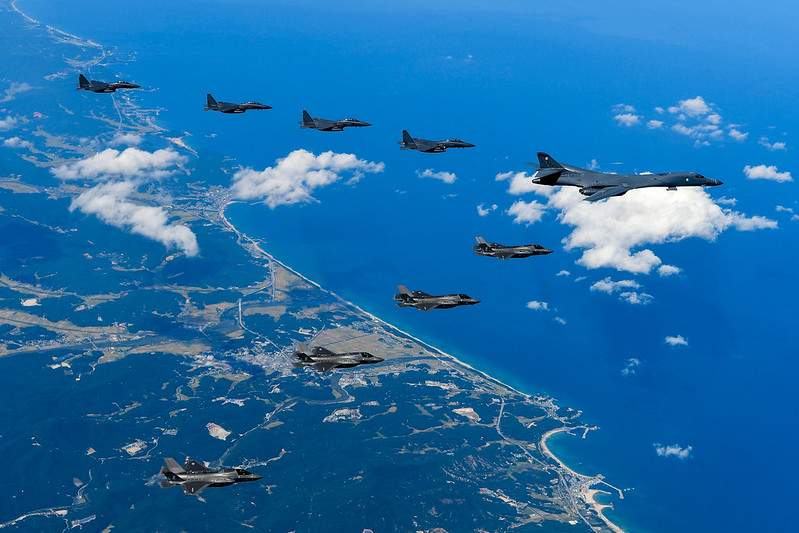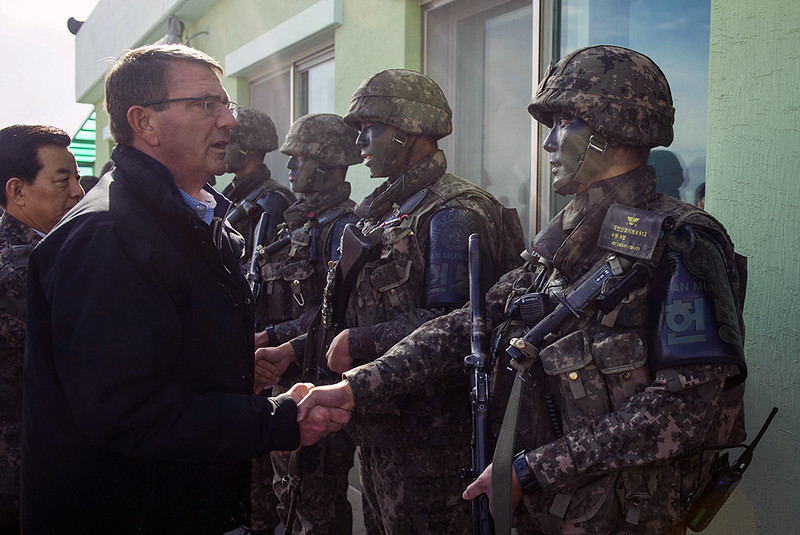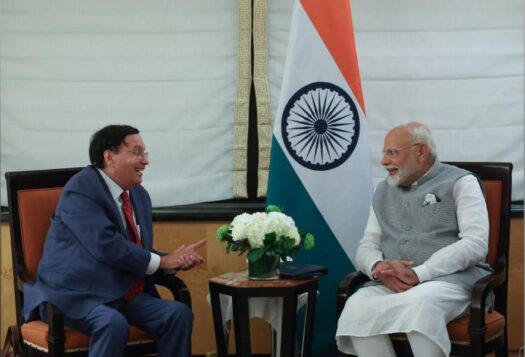
This piece was co-published as a part of a series with 38 North, a publication of the Henry L. Stimson Center.
North Korea’s advancing nuclear threats continue to command significant attention from South Korean and U.S. policymakers and analysts. North Korea has conducted over 100 missile tests since the start of 2022. In addition, the Commander of U.S. Forces Korea testified in April 2023 that a seventh North Korean nuclear test was not a matter of “if” but “when.” Pyongyang also issued a new nuclear forces employment law in September 2022, which not only established a first-use doctrine, but also broadened the conditions triggering nuclear use to “encompass almost all thinkable nuclear, non-nuclear and political crisis situations.” This new policy partly reflects North Korean concerns about the growing sophistication of South Korea’s missile capabilities, as these gradually improve the credibility of Seoul’s pre-emptive conventional counterforce strategy against Pyongyang’s nuclear forces and leadership.
These growing nuclear risks are exacerbated by the widespread South Korean popular support for acquiring its own independent nuclear forces. In a landmark statement in January 2023, President Yoon Suk-yeol openly suggested this path as a viable option. However, these pro-bomb sentiments are also influenced by North Korea’s seeming impunity in conducting subconventional attacks and provocations against South Korea. In its search for conventional and nuclear escalation options to reduce subconventional instability, Seoul can learn from how a similar quest has played out in the India-Pakistan rivalry.
As Seoul considers its strategic approaches, it is crucial to understand how India and Pakistan’s acquisition of nuclear weapons have not secured satisfactory deterrence of their rival.
New Delhi and Islamabad’s experiences serve to warn against acting upon temptations to respond to limited provocations with conventional escalation in a nuclearized environment. India and Pakistan’s interlocking responses to subconventional instability have worsened their security environment, including conventional limited war planning and recent crisis responses that risk nuclear escalation. Moreover, as Seoul considers its strategic approaches, it is crucial to understand how India and Pakistan’s acquisition of nuclear weapons have not secured satisfactory deterrence of their rival. Instead, they have only exacerbated arms racing and instability at the subconventional, conventional, and nuclear levels.
Subcontintental Rifts
India and Pakistan’s nuclear tests in the spring of 1998, paired with declarations of their overt nuclear weapons state status, were partly intended to moderate mutual military adventurism and incentivize dialogue. The shared assumption by both New Delhi and Islamabad’s political leadership was that pursuing military solutions for their disputes would pose unacceptable escalation risks in this new context of mutually assured destruction (MAD). As such, it became clear that peaceful engagement was the most viable approach, or as Indian Prime Minister Vajpayee even put it, the “only path.”
However, the 1999 Kargil War quickly punctured these hopes, as the Pakistan Army attempted to quietly seize key heights in the India-governed Kargil sector of Kashmir. India engaged Pakistan in a limited but bloody conventional war, which resulted in a return to the geographic status quo. In the aftermath of this conflict, Indian political and military leaders began speaking openly about the need to develop limited conventional war capabilities and concepts to deter and punish Pakistan for executing such subconventional operations.
This thinking was only reinforced by a terrorist attack by Pakistan-based militant groups in December 2001. This led to the massive mobilization of Indian and Pakistani conventional military units, and the threat of major war, which lingered for months. While this crisis eventually resulted in a military climbdown, both India and Pakistan drew a similar lesson from it: the solution to subconventional instability lay in building conventional and nuclear capabilities, which would enable policymakers to outmatch their rival at each rung of the escalation ladder. The adversary would then be deterred from conducting subconventional operations by realizing the disproportionate—and potentially nuclear—costs it would suffer in response.
South Asian policymakers have since largely viewed continuing subconventional instability as a failure to develop the conventional and nuclear strategies to achieve the desired deterrent effect. This is opposed to identifying the root logic of deterring subconventional operations by threatening military escalation as being at fault. Meanwhile, their intention to fight wars under the nuclear umbrella has only driven risky strategic concepts and arms racing. Examples include the 2004 Indian Army Cold Start military doctrine, which is intended to be a coercive military solution in the event of another terrorist attack by Pakistan-based actors. The idea is that small, high-mobility offensive army formations would quickly enter and hold limited swathes of Pakistani territory to then use as bargaining leverage. However, the strategic viability and operational reality of this concept remain doubtful. Nevertheless, it has partly motivated Pakistan’s development of Nasr tactical nuclear weapons to deter operations under the Cold Start paradigm.
Pakistan has also recently publicized its strategic doctrine of “Quid Pro Quo Plus” through a quasi-official statement. This doctrine clarifies that Pakistan is willing and able to deliver a more destructive conventional response to conventional attack by India, while still retaining Pakistan’s ambiguity regarding its nuclear threshold. India and Pakistan’s missile and nuclear forces continue to grow and diversify, and conventional and dual-use missiles are becoming especially central in their limited war planning.

The most recent major South Asian crisis—the 2019 Pulwama-Balakot near-war—encapsulates the lessons for the Korean Peninsula of attempting to escape subconventional instability through military escalation in a nuclearized environment. In this crisis, India responded to a Pakistan-based militant bombing of a paramilitary convoy in India-governed Kashmir by conducting conventional airstrikes in Pakistan with an Indian Air Force (IAF) formation large enough to resemble a nuclear strike mission. The Pakistan Air Force (PAF) reciprocated the next day, leading to a dogfight in which an IAF pilot was downed and captured. Toward the end of the crisis, both states had reportedly placed missiles at higher readiness, and made veiled references to their nuclear resolve.
While hostilities ended through third-party mediation, New Delhi and Islamabad have both concluded that their forces demonstrated the ability to impose costs at higher levels of conventional escalation, while still avoiding nuclear war. While South Asian and international analysts now assess that India-Pakistan crises are likely to escalate more quickly and unpredictably, both states continue to induct precision-strike forces that only bolster their confidence in winning a limited war against the other, while somehow averting intentional or unintentional nuclear escalation.
Parallels for South Korea
At first sight, the South Korean experience of managing North Korean threats across the 38th Parallel appears to be too dissimilar from the India-Pakistan relationship for gleaning any meaningful lessons. The Republic of Korea (ROK) does not possess nuclear weapons, is a U.S. ally with an extended deterrence commitment, and permanently hosts U.S. forces with regular joint training operations and military planning. Its rival, the Democratic Republic of Korea (DPRK), is one of the world’s poorest states, and yet has simultaneously developed a nuclear arsenal with greater range than either India or Pakistan.
However, Seoul’s management of Pyongyang’s subconventional provocations indicates similar dilemmas to those of India and Pakistan. North Korea sent multiple drones into South Korean airspace in December 2022, which was in violation of the 1953 Armistice Agreement, with one even successfully overflying Seoul and entering the no-fly zone around the presidential office. President Yoon Suk-yeol vowed an “overwhelming response capability to North Korean provocations that goes beyond proportional levels,” and made his pro-nuclear comments just over two weeks later.
In another example, North Korea’s sinking of the ROK naval corvette Cheonan in March 2010 was followed by its intense artillery bombardment of South Korean positions on Yeonpyeong Island that November. This led to Seoul commencing not just a local artillery counter-bombardment, but also scrambling F-16K fighters to attack any hostile North Korean fighters while conducting ground strikes on North Korean artillery. South Korean President Lee Myung-bak was reportedly frustrated at military resistance to these F-16K orders, as they cited restrictive rules of engagement and their view that stronger U.S. assent was required for this operation. These episodes highlight South Korea’s preference—over multiple leaders—for constraints on its ability to forcefully respond to North Korean provocations to be loosened.
Moreover, Seoul may also be beginning to support more subconventional measures of its own. Activists based in South Korea released balloons carrying medicinal supplies and propaganda into North Korea in 2014 and 2022. Both incidents led to exchanges of fire along the demilitarized zone (DMZ). Seoul is now reportedly considering decriminalizing the sending of such balloons into North Korea, despite warnings from Pyongyang about escalatory consequences. Seoul also responded to the December 2022 drone incursions by sending its own surveillance drones into North Korea to photograph military facilities.
Seoul’s commitment to conventional precision missiles is such that it is the only non-nuclear state to possess submarine-launched ballistic missiles.
Having successfully pressed the U.S. to lift missile payload limits on its indigenous ballistic and cruise missile force, South Korea is also engaged in building out its conventional counterforce capabilities, including plans to directly target Kim Jong Un. Seoul’s commitment to conventional precision missiles is such that it is the only non-nuclear state to possess submarine-launched ballistic missiles. These posturing decisions pose increasingly credible escalatory threats to North Korean subconventional provocations, while strengthening its freedom to conduct such operations independent from U.S. joint military structures. Analysts warn that South Korean responses using these platforms can elevate the risk of a general war with North Korea, with uncontrollable escalation outcomes. The idea that subconventional stability can be attained through threatening to strike at higher conventional and, potentially, nuclear levels has been undercut by South Asia’s record of results in pursuing exactly this same approach.
Conclusion
As South Korea contemplates its options, there are further lessons from South Asia it can study. Stimson Center research has shown that Indian leaders can, and do, “select” which provocations should be treated as “crises” with an Indian military response. Following India’s March 2022 accidental cruise missile launch into Pakistan territory, Islamabad demonstrated military forbearance, and only issued diplomatic criticisms. Cases like these highlight that not every subconventional provocation mandates an armed reaction. While this point may appear obvious, the new precision-strike weapons entering Seoul’s arsenal will give its policymakers new temptations to act using its increasingly credible limited military options.
The second lesson is that dialogue and risk reduction measures are key to stabilizing the rivalry. As difficult as ROK-DPRK relations are, combined with the fact that they are increasingly intermeshed with the broader U.S.-China regional competition, it is all the more imperative for Seoul and Pyongyang to recognize the accidental escalation risks of their current trajectories, and negotiate risk reduction measures. India and Pakistan, amidst their seemingly intractable competition, have still been able to come to several such agreements. Those especially relevant for the Korean peninsula include a ballistic missile flight test pre-notification protocol and agreement to provide advance notice of military exercises. While the present state of ROK-DPRK relations is not especially conducive to discussing such measures, an initial step in this direction could be quiet South Korean discussions with Indian and Pakistani officials about the negotiation and functioning of these arrangements. This experience could, in turn, facilitate some form of inter-Korean dialogue—through backchannels if necessary—on these India-Pakistan accords. Their design and operationalization could serve as templates for Seoul and Pyongyang to build upon in addressing accidental escalation risks.
Also Read: Envisioning New Nuclear Doctrines
***
Click here to read this article in Urdu.
Image 1: U.S. and ROK Air Forces conduct a mission over the Korean Peninsula via Flickr
Image 2: U.S. Secretary of Defense visits ROK Soldiers at the DMZ via Flickr


